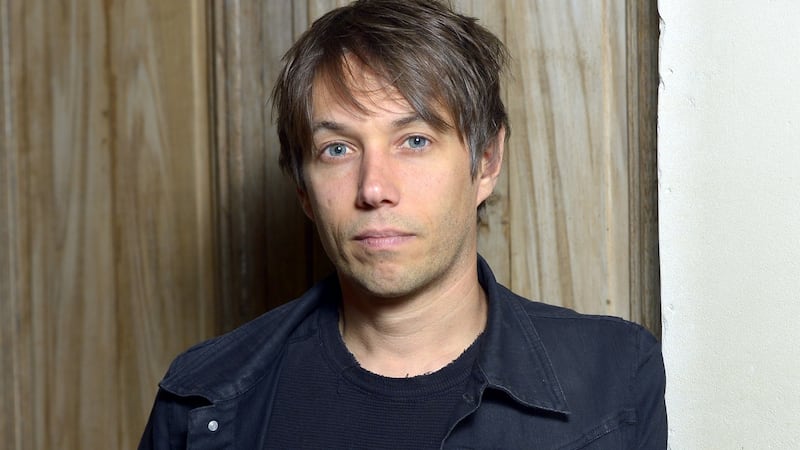Not too far into the new movie Tangerine, there comes a moment when Alexandra (Kiki Rodriguez) accidentally tells her best friend Sin-dee (Mya Taylor), that Sin-dee's boyfriend and sometime pimp, Chester (The Wire's James Ransone), has been cheating on her with a cisgendered woman: a "fish".
The transgendered Sin-dee immediately storms out of the donut shop where they’ve been sitting. The trap music of DJ Lightup kicks in on the score; it’s Christmas Eve in Santa Monica and she’s going fish-hunting.
It's a stunning sequence: one that compares favourably with Scorsese's ground-breaking use of handheld tracking in Mean Streets. There may be better films in 2015 – although they'll have to be very good indeed – but no movie will match Tangerine for sheer energy.

Director Sean Baker’s much- buzzed-about fifth feature has made headlines as the first feature to be shot on an iPhone in proper cinematic aspect ratio. But it also manages to be the most colour-saturated feature since Douglas Sirk’s heyday.
“I didn’t know it would look that way at first,” says Baker. “I’m really influenced by British social realism, by the work of Mike Leigh and Ken Loach. I love Ulrich Seidl: I think he’s one of the last of the great masters of cinema. The work I love tends to be very desaturated. And that’s what I originally thought I was going to do. But when I first shot some test footage, it seemed so wrong. It didn’t look like the world I was trying to represent.”
The iPhone allowed Baker to make the film for $100,000 dollars – much of it handed over by mumblecore graduates the Duplass Brothers – but there are many more innovations to cheer about.
Social media played a huge role in the production: the film benefits from cameos from Instagram star Francis Lola, Vine star Chelcie Lynn and a soundtrack sourced on Soundcloud. Baker unearthed the movie’s most-chattered about trap music track through Viner and YouTuber wolftyla, who is duly thanked in the credits.
“It’s not the kind of music I normally listen to,” laughs the director. “I like Britpop and shoegaze. I still listen to Suede. When we started post-production, I didn’t know what the sound design would be. To tell you the truth I told my producers that they didn’t have to budget for music. I was more surprised than anyone when we ended up with 35 tracks. Soundcloud allowed us to reach out to the artists directly. I was just as surprised that we ended up using trap music. But I was using Vine and it sounded like the world I had just been immersed in.”
Immersed is the word. The director and his co-writer, Chris Bergoch, spent almost a year researching transgender sex workers around the LGBTQ centre in West Hollywood. Enter Kiki Rodriguez, Tangerine's leading lady, who collaborated closely with the director at every stage of production.
“When I first saw Mya, she was at the LGBTQ Centre about a block away from Santa Monica and Hyland,” recalls Baker. “And she had such a dynamic quality. Everything about her: her physical presence, the way that she commanded the conversation with her friends. So I introduced myself. And she introduced me to many of the girls working the area.
“But it wasn’t until I met Kiki that I knew we had a dynamic that was very cool. And that we had to develop around these two women.”
Humour The film marks the screen debut of trans actors Taylor and Rodriguez, who together make for bitchy banter that puts one in mind of a X-rated episode of Ru Paul's Drag Race. It shouldn't be ground-breaking to cast trans actors in trans roles, but it is.
“We had no idea that it was going to be a trend movement,” says Baker. “We went down this road almost two-and-a-half years ago. And there’s suddenly been some much needed progress: Obama being the first US president to use the word transgender; Laverne Cox on TV; Caitlyn Jenner. All of these things make our film feel like part of the zeitgeist. But it wasn’t deliberate.”
Tangerine marks yet another fascinating departure in terms of cinema tropes: the film's sex workers are neither happy hookers nor ruined women. True, their lives aren't easy, but they beat on, making consistently hilarious remarks, nonetheless.
“When I was doing my research on the streets I noticed the humour,” says Baker. “Obviously the women are in the sex trade because of discrimination and oppression and poverty. Obviously it’s an underground economy. But they’re coping. And just as the rest of us use humour as a coping mechanism, they have to use humour to an even greater degree because of the hardships they face. Life is hard when your identity isn’t recognised by many people. And I wanted to infuse the film with that humour I encountered, the humour they use to get by, and make it not only a part of the dialogue and the plot but also the style of the film.”



















